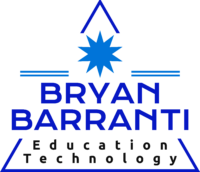
After finishing our summer course and only having a month of holidays, I’m not quite ready to dive back into school life, whether as a teacher or a student in my Masters program. Right now, I feel completely overwhelmed, like I’m already behind before we’ve even started! But here we go anyway…
We’re kicking off the new semester with two courses, EDCI 569: Theory and Discourse on Distributed and Open Learning and EDCI 572: Development and Implementation of the Curriculum, which are essentially being merged into one. I’m excited that these topics blend so well together and hope that it will feel like we’re only taking one course. Hopefully, the workload will be lighter than it would be with two separate classes, or at least it’ll feel that way!
We jumped right in with two readings: Twenty Years of Edtech (Weller, 2018) and the BC Digital Literacy Framework (British Columbia Ministry of Education, 2016), which I was relieved to find as a nice, light reintroduction to get me back into the mindset for this program.
The first article by Weller was an interesting read, which had me reminiscing a great deal. The article outlines the evolution of educational technology, highlighting how tools like Learning Management Systems (LMS) and open educational resources (OER) have fundamentally altered the way we teach and learn. He emphasizes the influence of social media, particularly through collaborative platforms like blogs and wikis, which have reshaped educational spaces by fostering deeper interaction. Throughout, Weller reminds us that Edtech trends are often cyclical, with innovations such as AI re-emerging, evolving, and reshaping the classroom once more, much like how we see the constant interplay of tradition and innovation in craftsmanship. For example, in woodworking, technology advances like CNC routers and laser engravers have revolutionized precision and creativity, but they’ve also reignited an appreciation for the simplicity and tactile experience of hand tools, bringing them back into focus for many craftsmen who value the balance between tradition and modernity. This evolution in Edtech had me reminiscing about my early experiences, like adding gifs and short videos to my Geocities page, and the leaps in AutoCAD technology, from the initial DOS scripts I trained on at BCIT to today’s Windows-based version with its user-friendly button prompts.
The second document, the BC Digital Literacy Framework, also brought back memories of my own experience teaching and structuring various Computers courses and other TechEd courses like Drafting and Woodworking from Grades 7–12. The document outlines the essential skills students need to navigate a rapidly changing digital world, focusing on competencies like communication, critical thinking, collaboration, and digital citizenship. One of its key points is fostering students’ ability to create and innovate with digital tools, which I’ve seen firsthand through projects like website design in Grade 9, where students use HTML and basic web editors to create their own pages, a task that not only teaches coding but also critical thinking about content and design. For my woodworking students, I encourage digital problem-solving through CAD software, where they design their own woodworking projects, aligning well with the framework’s emphasis on using technology creatively and responsibly.
After reading these two articles, I feel much more at ease about the new semester. These readings brought back many fond memories of my use, exploration, integration, and growth within the ever-changing technological landscape of my generation. I’m looking forward to seeing how these courses further unfold.
References
Weller, M. (2018, August). Twenty Years of Edtech. EDUCAUSE Review, 53(4), 34–48.
